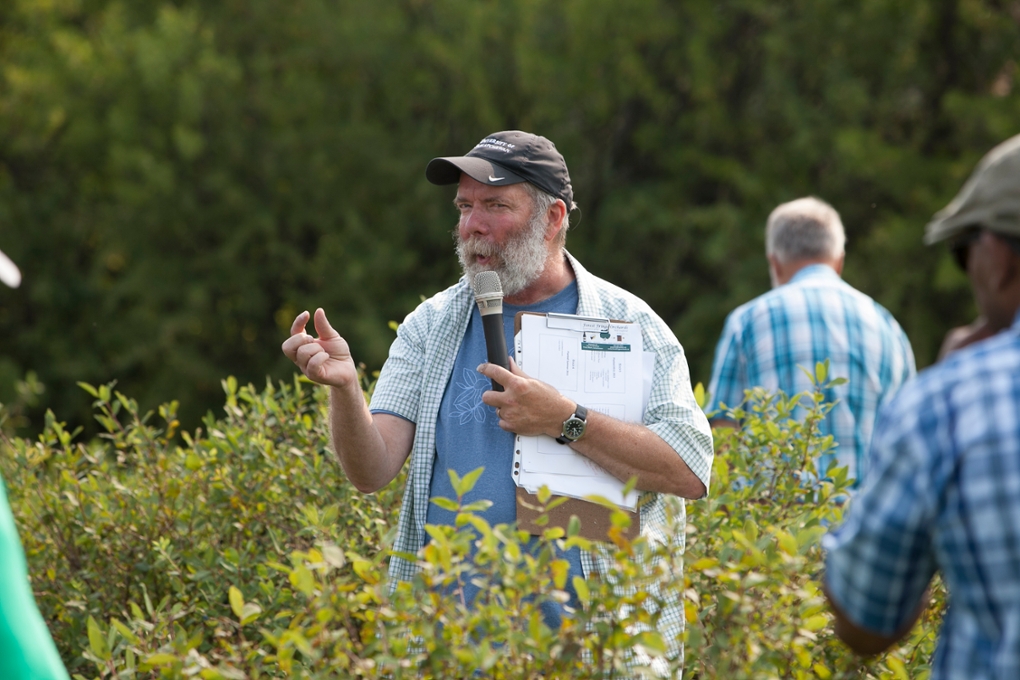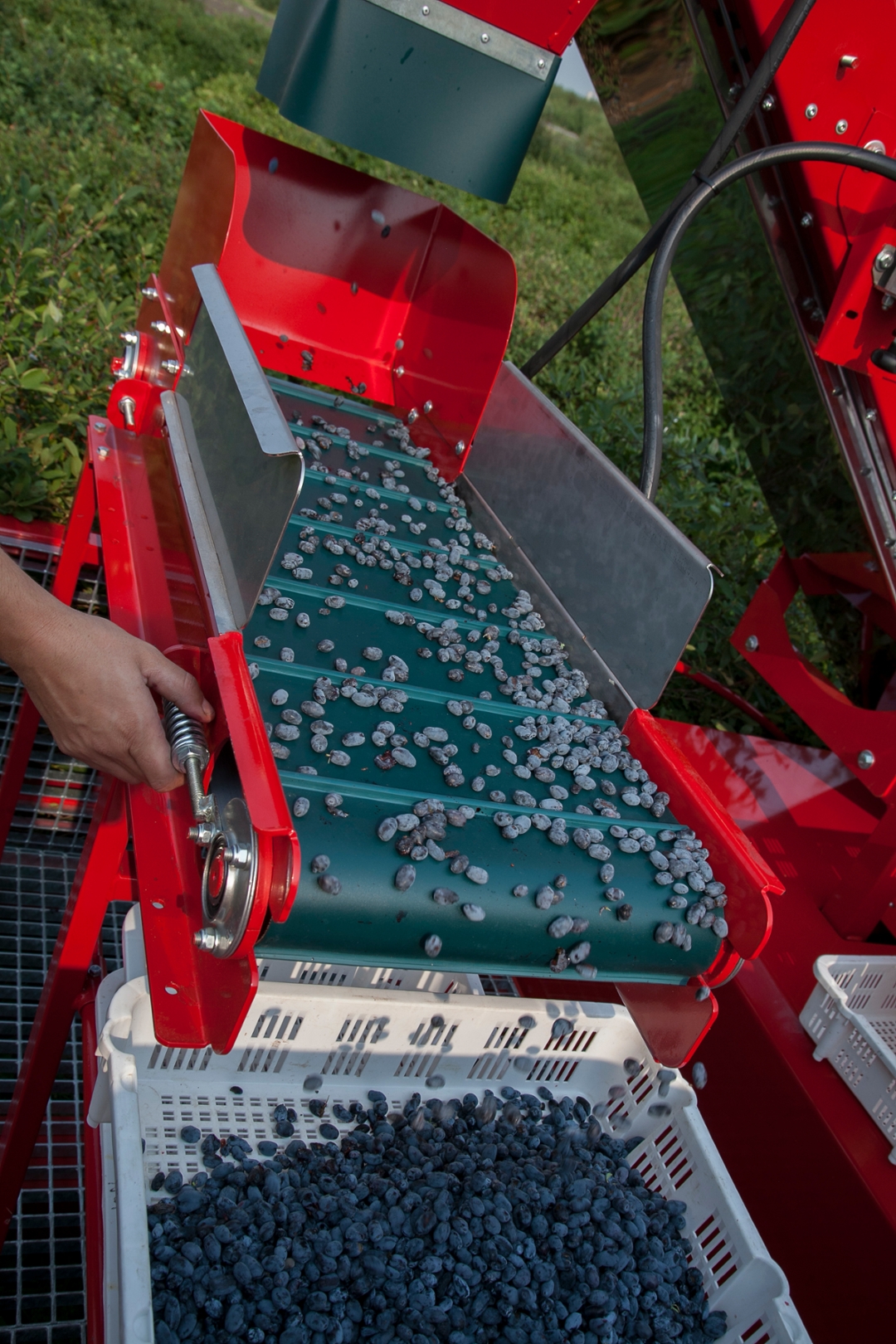
The fruits of success
The temperaments and tastes of the researchers who have shepherded the U of S’s fruit program from its modest beginnings in 1921 have wrought as great an impact as good breeding and astute field practices. Each man who cared for the 80-acre orchard left his mark on the program.
By Dee Hobsbawn-SmithAccording to Bob Bors, the current champion of the fruit program, the major achievement of the original professor, Cecil Patterson, “was getting something to survive in Saskatchewan.” Just before he retired, Patterson released a flurry of plants – eight pear varieties, twenty apple types, a dozen plums. “I suspect he didn’t think anything was good enough, but this was the best he could do,” Bors commented.
Patterson’s successor, Stewart Nelson, bred tough, productive plants. But Nelson was a chain smoker, and Bors suspects that because sour fruit could cut through his smoker’s palate, he crossed in sour wild fruit when adding hardiness to apples, saskatoons and raspberries. Nelson shocked his staff when he ordered the destruction of the raspberries at the conclusion of his 27-year tenure. “He thought they were not good enough,” Bors said, “but Rick Sawatzky–who has been here for 46 years–took home the three best. When Nelson retired, Rick brought them back and they became the first varieties released–Red Mammoth, Red Bounty and Steadfast.”
Although Les Kerr, who was superintendent of the Prairie Farm Rehabilitation Administration (PFRA) forest nursery station in Sutherland between 1942 and 1966, did not work for the university’s fruit program, his efforts had a lasting impact on the program. “Kerr was breeding shelterbelts,” said Bors, “but he also was breeding hazelnuts and sour cherries at friends’ farms… crossing Mongolian cherries with European cherries, and wild Manitoba hazelnuts with larger European nuts.”
Professor Cecil Stushnoff, who took over the fruit program in 1983, collaborated with Sawatzky to round up Kerr’s plants and bring them on campus after Kerr’s death. Stushnoff also initiated a side project of native fruit breeding in the early 1980’s, collecting species of chokecherries, saskatoons and currants, ultimately evolving into the successful saskatoon program.
Tissue culture and propagation specialist Bors arrived in 1999. He is intensely interested in developing nuts and fruits that can be grown commercially, and started with Kerr’s rescued sour cherries, by then in their second generation. “No one other than Rick was excited about them, a whole field!” he said.
Bors’s strategy in aiming for commercially viable fruit of high quality with organic potential and few pests meant breeding for durable fruit that ripens uniformly, with flexible branches that would allow mechanized harvesters to bend them. By then he’d analyzed the amount of tug needed to pull a cherry off its bush without actually having a machine. [See sidebar, “Of Men and Mechanized Harvesters.”]
He initiated tissue culture and promoted the cherries at a professional conference in the early 2000s, where they were a sensation. “The Hungarian plant physiologists said all the cherry breeders were jealous,” reported Bors. “No one could believe anyone in Saskatchewan could grow any cherries, they thought it was in the centre of the dead zone!” The end result was the Romance series of sour cherries, one of the most successful cold-hardy results of the fruit program.
Next, Bors turned to haskap: in 2000, eight bushes fruited for the first time. Bors did some crosses, met breeders, travelled and bought other varieties. “Before long we had the world’s second largest collection of haskap varieties planted all over our land, 25 varieties from Russia, hundreds of Russian seeds, stuff from Japan, seeds from 16 places,” he said proudly. “This place is the birthplace of haskap in Canada and North America.” He barely paused before saying, “My next big project is hazelnuts.”
Hazelnuts, like sour cherries, sprang from the kernels of Kerr’s off-campus sheltercrop plantings. Now in their third generation, the nuts are getting successively hardier as Bors crosses them with Oregon breeding stock. Bors, always with an eye to commercial viability, observed that Ferrero-Rocher, the candy company famous for its hazelnut-chocolate confections, has a factory in Ontario, and reasoned it could be a target market. Two reasons prompted that analysis: the Saskatchewan-bred nuts are resistant to hazelnut blight, and their smaller size is ideal for the company’s sweets. Bors’s efforts currently centre on hardiness and productivity, but he warned that hazelnut trees “are known for making empty nuts, so breeders have to open a lot of nuts and see what’s in there. I haven’t tracked it yet, but it will be on my radar.”
Also on the horizon is a project involving small red-skinned plums. “They’re red inside, you never see that in a prairie plum, but looks cool to me. Size is the challenge, we have some large BC ones for crossing, but we need another generation.” Another project involves Crossmount Cider Company south of Saskatoon, where former students of Bors now work. “They are testing large-scale our favourite varieties that we think are best for cider. Eventually we’ll know which ones to release as cider apples.”
Bors also reported having “a few hundred rhubarb seeds from all over the place, eight kinds from the gene bank, every seed from Canada,” and pears, part Asian, part Bartlett, part “horrible-tasting Russian,” with the distinctive round shoulders of their Asian ancestors. The pears are still in the early stages of propagation, but Bors sounded hopeful. “The fruit is small but good enough to bother with,” he said. “It could be four or five years.” Four or five years are small fruit, a mere blink in the life of a successful orchard.

In 2010, the fruit program’s first mechanical harvester, a Polish-made Weremczuk “Joanna 3,” cost a mere $40,000, and it arrived only partly assembled. The fruit program’s maintenance man spent two weeks assembling it. “After we put it together and used it, the maintenance guy and I sent the manufacturer notes on how to improve the thing,” Bors said. The company so appreciated the input on design improvement that with assistance from G2S Pickin’ Patch, the local dealer, it donated a new and improved “Joanna Premium” harvester to the fruit program in the summer of 2017.
The new machine promises to be a vast improvement and arrived in time for the annual Haskap Days in July. “It will be used on cherries, saskatoons and haskap, even raspberries,” Bors commented. “It’s especially good for delicate fruit; it shakes the shrub so gently sideways and bends the branches to a 45-degree angle and the fruit only drops a foot, onto the conveyor belt and not on the ground. Plus it will pick lower on the bush. Our haskap will produce a kilogram of fruit after three years of growth, and in the past, the machine would only pick a fraction of that.” Because the new machine only harvests half a bush at a time, Bors can evaluate the other half to determine if the plant will stand up to having its branches bent over, which allows him to breed specifically for the machine.

